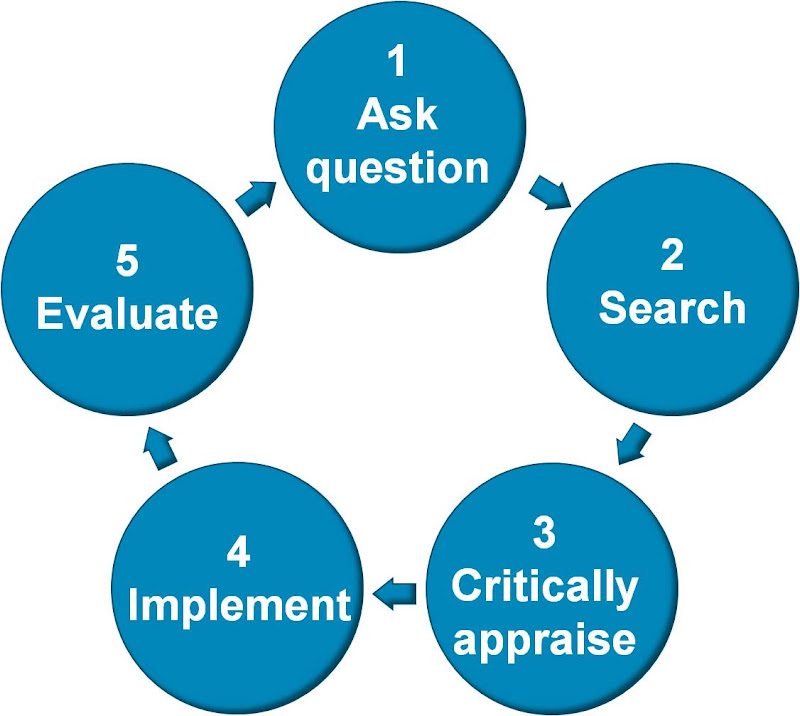Evidence-Based Practice (EBP)

*image from UIC University Library: https://researchguides.uic.edu/c.php?g=252564&p=1683884
According to Dr. David Sackett (1996), EBP is “the conscientious, explicit and judicious use of current best evidence in making decisions about the care of the individual patient. It means integrating individual clinical expertise with the best available external clinical evidence from systematic research.”
In a follow-up article, Sackett (2002) goes on to describe how clinical experience, patient reporting, and clinical research work together to create a better decision making process for patient care. Clinical experience is valuable in that it draws on the expertise of many different clinicians, while patient reporting provides a fuller understanding of the results of clinical decisions. Coupling these two sets of data with the wealth of research being performed by both practitioners and researchers provides for a more profound understanding of how evidence drives clinical care.
Sackett, D. L., & Haynes, R. B. (2002). The architecture of diagnostic research. BMJ, 324(7336), 539-541.
Sackett, D. L., Rosenberg, W. M., Gray, J. A., Haynes, R. B., & Richardson, W. S. (1996). Evidence based medicine: what it is and what it isn't. BMJ, 312(7023), 71-72.
Stages of EBP

*image from NT Health Library Services: http://library.health.nt.gov.au/EBP/overview
Evidence-Based Practice (EBP) is ideally an ongoing process that can be broken down into five simple steps. This guide provides information and resources to help guide you through the first three.
- 1. Ask a Question - Develop a question based on your information needs. This step will orient your search as you continue.
- 2. Perform a Search - Locate the best research and information to answer your question.
- 3. Critically Appraise the Information and Evidence - Critically appraise the data for validity, impact, and applicability while using the the Hierarchy of Evidence.
- 4. Implement the Information and Evidence - Integrate the appraised evidence with clinical expertise and the patient's unique biology, values, and circumstances.
- 5. Evaluate - Determine your effectiveness in executing Steps 1-4 and seek ways to improve for next time
Dean J, Gallagher FL, Connor L. Evidence‐Based Practice: A New Dissemination Guide. Worldviews on Evidence-Based Nursing. 2021;18(1):4-7. doi:10.1111/wvn.12489
Straus SE. Evidence-Based Medicine: How to Practice and Teach EBM. Edinburgh: Elsevier; 2005.
